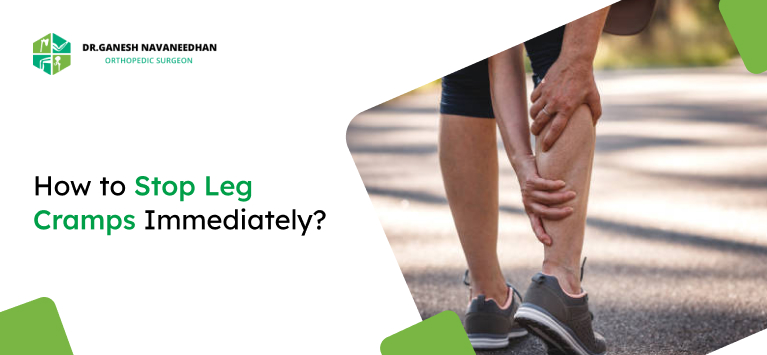- +91 62384 78716 +91 99475 78797
-
Sasthamangalam, Trivandrum
Sasthamangalam, Trivandrum

Leg cramps are sudden, involuntary muscle contractions that can cause significant discomfort and disrupt daily activities. They often occur in the calf, thigh, or foot muscles and can last from a few seconds to several minutes. Understanding the causes, immediate relief techniques, and preventive measures is essential for managing and reducing the occurrence of these painful episodes. In this blog, we will explore effective strategies on how to stop leg cramps immediately, delve into home remedies, and discuss dietary considerations to prevent future cramps.
Leg cramps, also known as muscle spasms or charley horses, are sudden and involuntary contractions of one or more muscles in the legs. These cramps can occur during physical activity or at rest, often striking at night and disrupting sleep. Common areas affected include the calves, thighs, and feet.
Several factors can contribute to thse development of leg cramps:
When a leg cramp strikes, prompt action can alleviate the discomfort. Here are some quick and effective ways on how to stop leg cramps immediately:
Gently stretching the cramped muscle can help relax the contraction.
Applying gentle pressure and massaging the cramped muscle can increase blood flow and relieve tightness.
Drinking water or an electrolyte-rich drink can replenish essential minerals and help relax the muscle. Staying hydrated is a key strategy in how to stop leg cramps immediately and prevent their recurrence.
Incorporating certain practices into your routine can reduce the frequency of leg cramps:
Engage in regular physical activity focusing on leg muscles to improve flexibility and strength. Stretching before and after exercise can prevent cramps.
Maintain proper hydration throughout the day. Water is essential, but drinks containing electrolytes can also help maintain mineral balance.
Consuming foods high in magnesium, potassium, calcium, and sodium supports muscle function.
Some herbal teas, such as chamomile and valerian root, have muscle-relaxing properties that may help prevent cramps.
Long periods of sitting or standing in one position can lead to muscle fatigue and cramps. Take breaks and move around regularly to improve circulation and prevent cramping. Just like how moving your mouth while chewing helps keep your teeth healthy, moving your muscles helps prevent cramps.
Diet plays a significant role in muscle health. Incorporating specific foods and drinks can help prevent leg cramps:
Certain foods may contribute to muscle cramps and should be consumed in moderation:
Nighttime leg cramps can disrupt sleep and affect overall well-being. To prevent and manage these cramps:
Leg cramps can be painful and disruptive, but they are often preventable with proper hydration, nutrition, and stretching exercises. If you experience frequent or severe cramps, consult a healthcare professional to rule out underlying conditions. By following these strategies on how to stop leg cramps immediately, you can effectively manage and prevent leg cramps, ensuring better muscle health and overall well-being.
Copyright © 2025 Dr. Ganesh Navaneedhan. All Rights Reserved. | Designed By Harvee healthcare